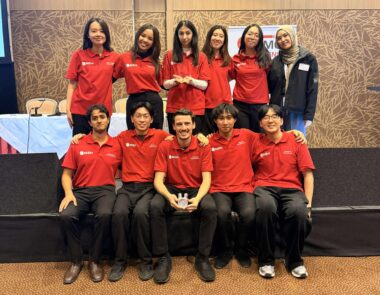Engineers Australia has identified keys to unlocking the successful transition of energy jobs and skills from thermal industries to renewables. Emerging research conducted in partnership with Mott MacDonald shows that some professionals and communities are already managing this transformation and, with additional support and better co-ordination, the pathway towards a net zero workforce in the energy sector is achievable.
Engineers Australia CEO Romilly Madew AO said these early insights are cause for optimism.
“We know that skilled engineers are already taking their extensive experience and translating it into roles in clean energy fields such as renewables. The legacy of coal, oil and gas sector is that professionals who’ve worked across those sectors are now contributing to net zero industries. This might be by moving into new roles in the clean energy sector or applying their skills to boosting sustainable practices in their current industry,” Ms Madew said.
“While many are managing the transition, employers are providing fresh insights into what else is needed to ensure no-one is left behind and that thriving communities can continue to be a hub for jobs and families into the future.”
Key emerging insights from the research:
Employment
Interestingly, the research reveals that employers prioritise mindset and capabilities over specific disciplinary experience, suggesting that skill transferability to the clean energy sector is feasible. Engineers transitioning from thermal to renewable energy roles can leverage existing skills while needing to expand their capabilities in areas such as stakeholder management, community engagement, and negotiation. Of course, there are some roles in the electricity industry, such as grid engineers, which require many years of experience. Transferability between these roles is low, and shortages are high.
Geographic considerations
Building the clean energy industry in communities with existing thermal energy workforces can prevent significant dislocation and encourage retention. Engineers are more likely to remain in the profession if they can find employment locally. Remote work and automation present opportunities for flexible job locations.
Engineering labour force
Recruiting from overseas is becoming less viable due to increasing global demand for engineers. Re-engaging the significant portion of qualified engineers not currently in the workforce, particularly women, older Australians, and migrant engineers already in Australia, is critical. Promoting the environmental benefits of the clean energy industry and addressing salary disparities between the thermal and renewable sectors can attract and retain the engineering team.
Training pathways
Embedding sustainability into all university and vocational engineering courses, rather than offering separate degrees, can prepare engineers for clean energy roles from the outset of their careers. Micro-credentials can facilitate transitions between sectors and demystify industry-specific jargon and standards, boosting confidence and competence.
Policy recommendations
Governments can play a pivotal role by better defining occupational profiles and updating the classification of occupations to reflect emerging roles in the renewable sector. Policy support is essential to drive innovation, align initiatives across governmental levels, and implement systemic changes that encourage skill transferability and workforce expansion.
Ms Madew said political and industry leaders have a huge opportunity to develop and promote policies which will help ensure skills are being transferred where investment is already occurring.
“Let’s further improve recruitment, retention and re-engagement. Investing in people and showing them the opportunities to deploy their existing skills is key to keeping existing communities thriving. Better training pathways and micro-credentialing will also go a long way towards supporting these career transitions,” she said.
Ends.
Media Contact:
Lisa McKoy Engineers Australia National Media Manager
[email protected] 0468 366 691
As Australia’s national engineering body, we champion our 127,000 plus members, providing resources, connections and growth for high-value work in our communities.



